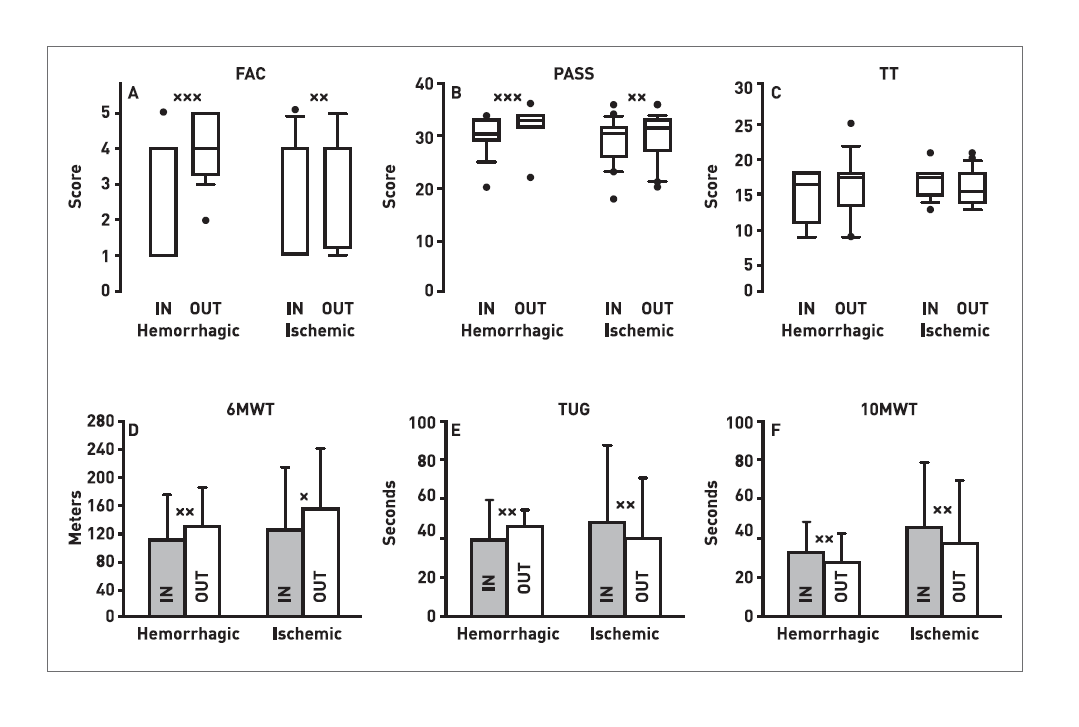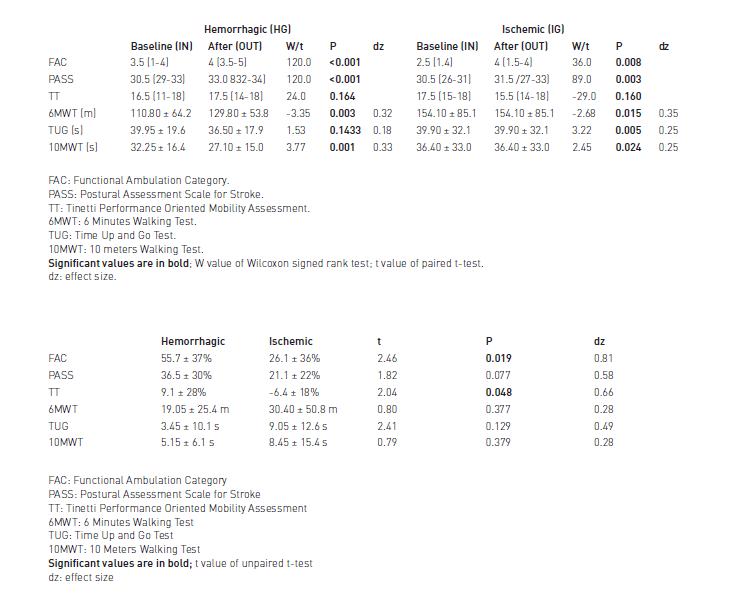
THERAPY-Magazin
Haemorrhagic vs ischemic strokes
A new study shows that stroke type does not affect outcomes in robotic-assisted gait therapy. Both haemorrhagic and ischemic stroke patients achieve significant improvements in walking ability with multimodal rehabilitation. Learn more about the results.

Redaktion
THERAPY Magazin
The type of stroke does not influence the outcome of robotic-assisted gait therapy
“Recent studies reveal that ischemic stroke survivors could experience similar or even greater functional improvements compared to haemorrhagic stroke survivors.”
Background
Contrary to the general opinion of many specialists, i.e. that haemorrhagic stroke survivors have better functional prognoses than ischemic stroke survivors, recent studies reveal that ischemic stroke survivors could experience comparable or even greater functional improvements. Until recently, however, there were no findings on the influence of the stroke subtype on gait and posture results after robotic-assisted gait training. Frédéric Dierick from Haute Ecole Louvain en Hainaut, Belgium, and his co-authors have reported on this in an article entitled “Haemorrhagic versus ischemic stroke: Who can best benefit from blended conventional physiotherapy with robotic-assisted gait therapy?”
Contrary to the general opinion of many specialists, i.e. that haemorrhagic stroke survivors have better functional prognoses than ischemic stroke survivors, recent studies reveal that ischemic stroke survivors could experience comparable or even greater functional improvements. Until recently, however, there were no findings on the influence of the stroke subtype on gait and posture results after robotic-assisted gait training. Frédéric Dierick from Haute Ecole Louvain en Hainaut, Belgium, and his co-authors have reported on this in an article entitled “Haemorrhagic versus ischemic stroke: Who can best benefit from blended conventional physiotherapy with robotic-assisted gait therapy?”
Objective
In their study, the researchers compared gait and posture results of haemorrhagic and ischemic stroke patients, all of whom received a 4-week treatment programme in which a conventional bottom-up physiotherapy approach was combined with exoskeleton top-down robotic gait training (RAGT).
In their study, the researchers compared gait and posture results of haemorrhagic and ischemic stroke patients, all of whom received a 4-week treatment programme in which a conventional bottom-up physiotherapy approach was combined with exoskeleton top-down robotic gait training (RAGT).
Methodology
A total of 40 hemiparetic stroke patients were recruited: 20 patients in the state after haemorrhagic stroke and 20 patients in the state after ischemic stroke (see figure on the right). The two study groups were matched with regard to age, gender, side of the hemiparesis, as well as the severity of the stroke and resulting locomotor impairments. Researchers measured functional improvement using the Functional Ambulation Categories, the Tinetti test, the 6-minute walking test, the Timed Up and Go (TUG), and the 10-metre walking test. All assessments were performed at the beginning and after a four-week intervention phase. The functional gains were then calculated and evaluated for all tests (see figure below).
A total of 40 hemiparetic stroke patients were recruited: 20 patients in the state after haemorrhagic stroke and 20 patients in the state after ischemic stroke (see figure on the right). The two study groups were matched with regard to age, gender, side of the hemiparesis, as well as the severity of the stroke and resulting locomotor impairments. Researchers measured functional improvement using the Functional Ambulation Categories, the Tinetti test, the 6-minute walking test, the Timed Up and Go (TUG), and the 10-metre walking test. All assessments were performed at the beginning and after a four-week intervention phase. The functional gains were then calculated and evaluated for all tests (see figure below).

“Patients who are unable to walk after stroke should receive robotic-assisted gait training in a multimodal therapy setting.”
Results
Significant improvements were observed in both the haemorrhagic and ischemic groups of stroke patients in the Functional Ambulation Categories (P < 0.001 and P = 0.008), the 6-minute walking test (P = 0.003 and P = 0.015), and the 10-metre walking test (P = 0.001 and P = 0.024). There were also significant improvements in the timed Up and Go test in the group of ischemic stroke patients.
Significant improvements were observed in both the haemorrhagic and ischemic groups of stroke patients in the Functional Ambulation Categories (P < 0.001 and P = 0.008), the 6-minute walking test (P = 0.003 and P = 0.015), and the 10-metre walking test (P = 0.001 and P = 0.024). There were also significant improvements in the timed Up and Go test in the group of ischemic stroke patients.
Conclusion
Overall, both groups demonstrated similar functional improvements. This led the authors to conclude in their publication that both groups benefit equally from the gait rehabilitation programme. The use of intensive care plans, which combine top-down physiotherapy and bottom-up robotic approaches, seems promising for poststroke rehabilitation – irrespective of the etiology of the insult.
Rather, it seems to be the functional deficits that determine the outcome of rehabilitation after stroke.
Overall, both groups demonstrated similar functional improvements. This led the authors to conclude in their publication that both groups benefit equally from the gait rehabilitation programme. The use of intensive care plans, which combine top-down physiotherapy and bottom-up robotic approaches, seems promising for poststroke rehabilitation – irrespective of the etiology of the insult.
Rather, it seems to be the functional deficits that determine the outcome of rehabilitation after stroke.

Comments
Patients who are unable to walk after stroke, whatever the cause of their illness, should receive robotic-assisted gait training in a multimodal therapy setting. The use of a gait trainer can minimise the risk of a gait disorder, and even prevent persistent impaired mobility.
Patients who are unable to walk after stroke, whatever the cause of their illness, should receive robotic-assisted gait training in a multimodal therapy setting. The use of a gait trainer can minimise the risk of a gait disorder, and even prevent persistent impaired mobility.
Ambulante Rehabilitation
Fachkreise
Intensiv- & Akutpflege
Science
Stationäre Rehabilitation
THERAPY 2018-II
THERAPY Magazine
Wohnen im Alter & Langzeitpflege

Redaktion
THERAPY Magazin
References:
- Dierick F, Dehas M, Isambert J-L, Injeyan S, Bouché A-F, Bleyenheuft Y et al. (2017) Hemorrhagic versus ischemic stroke: Who can best benefit from blended conventional physiotherapy with robotic-assisted gait therapy? PLoS ONE 12(6): e0178636.
Related contents
Find related exciting contents in our media library.
This is not what you are searching for? Knowledge
Meet our specialists.
Are you interested in our solutions? Schedule a meeting with a Consultant to talk through your strategy and understand how TEHRA-Trainer can help you to advance rehabilitation.